Lofen Palace has disappeared over the course of 1000 years between the Vismarkt and the Domsquare in Utrecht. Travel through time guided by the most important events.





A LOST PALACE
Timeline
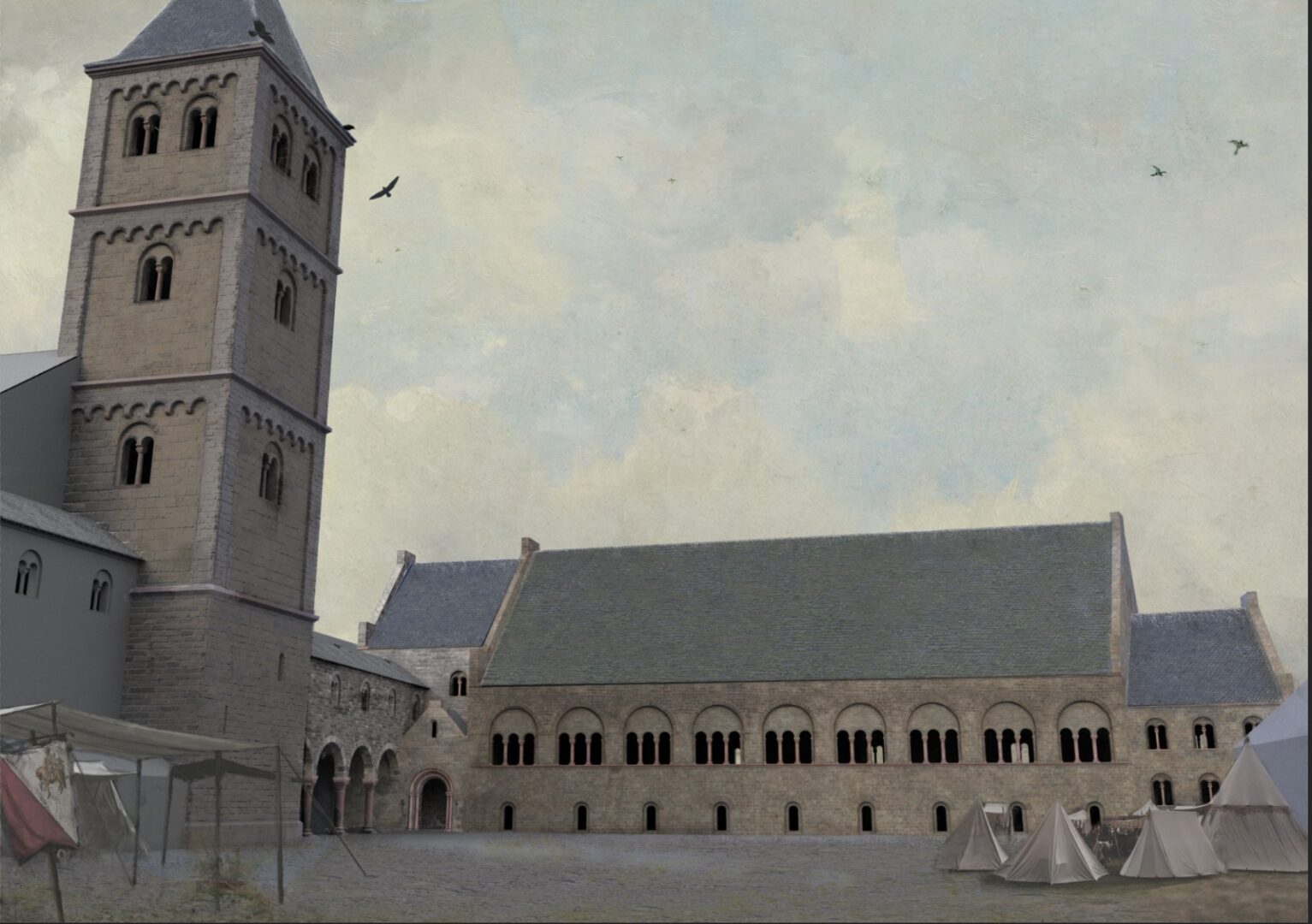
CONSTRUCTION
Utrecht was part of the Holy Roman Empire during the middle ages. This vast empire stretched across a large part of Europe. The emperor traveled from palace to palace to govern this big empire. One these palaces was named Lofen and was located in Utrecht.
Being about thirty by twelve meters in size, it must have been a magnificent palace. It was made out of tuff stone and a row of columns divided the inside. The outside featured arched windows and in the basement of the palace there were rooms for the court staff. Feasts were held and visitors were received in the great hall on the upper floor.
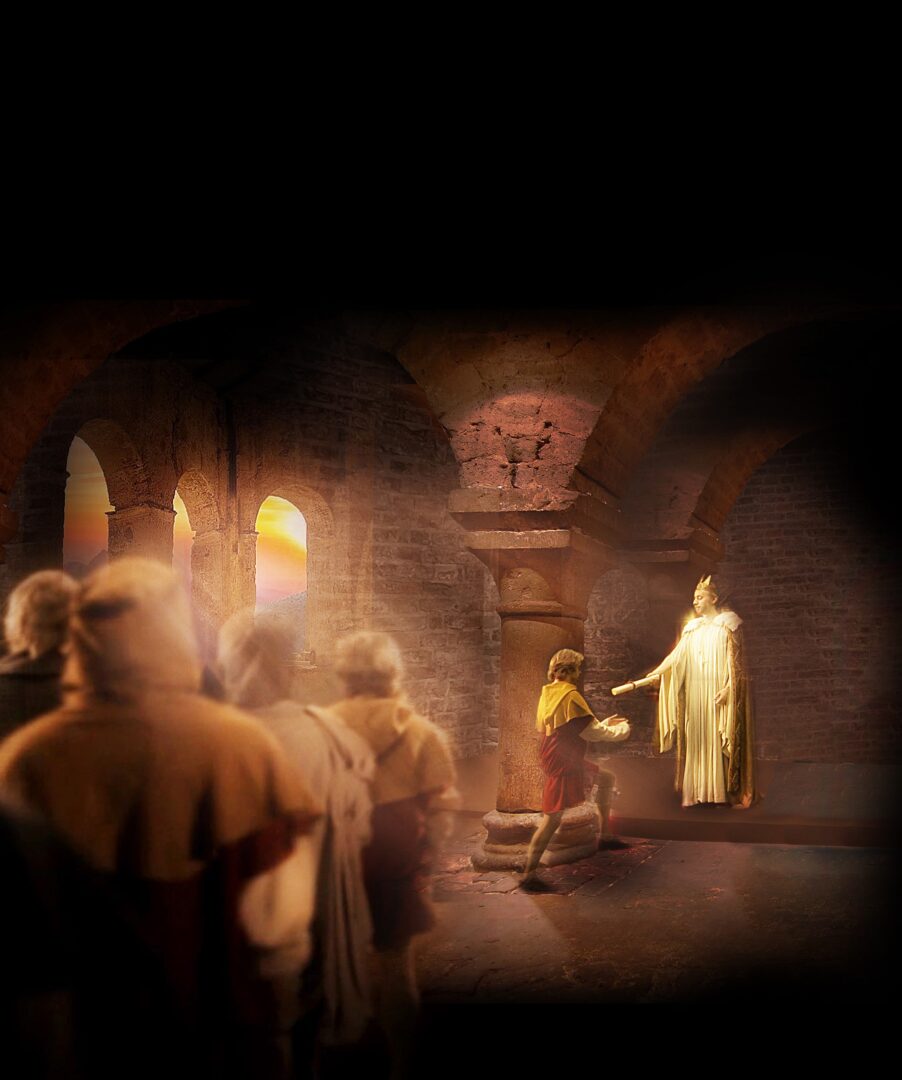
CITY RIGHTS
On June 2, 1122, Emperor Henry V granted city rights to Utrecht. One of the documents states: ‘Data in palacio imperatoris in Traiecto, quod vulgo Lofen dicitur,’ which means that the city rights were issued in the imperial palace in Utrecht, which was commonly called Lofen. Obtaining the city rights did not happen without a struggle, but it had great impact.
Obtaining city rights meant that they were allowed to build their own city wall, set up their own court, and establish their own administration. Besides, the residents were exempted from episcopal tolls. The impact of the city rights can hardly be underestimated. For centuries, Utrecht was the largest and richest city in the Netherlands.
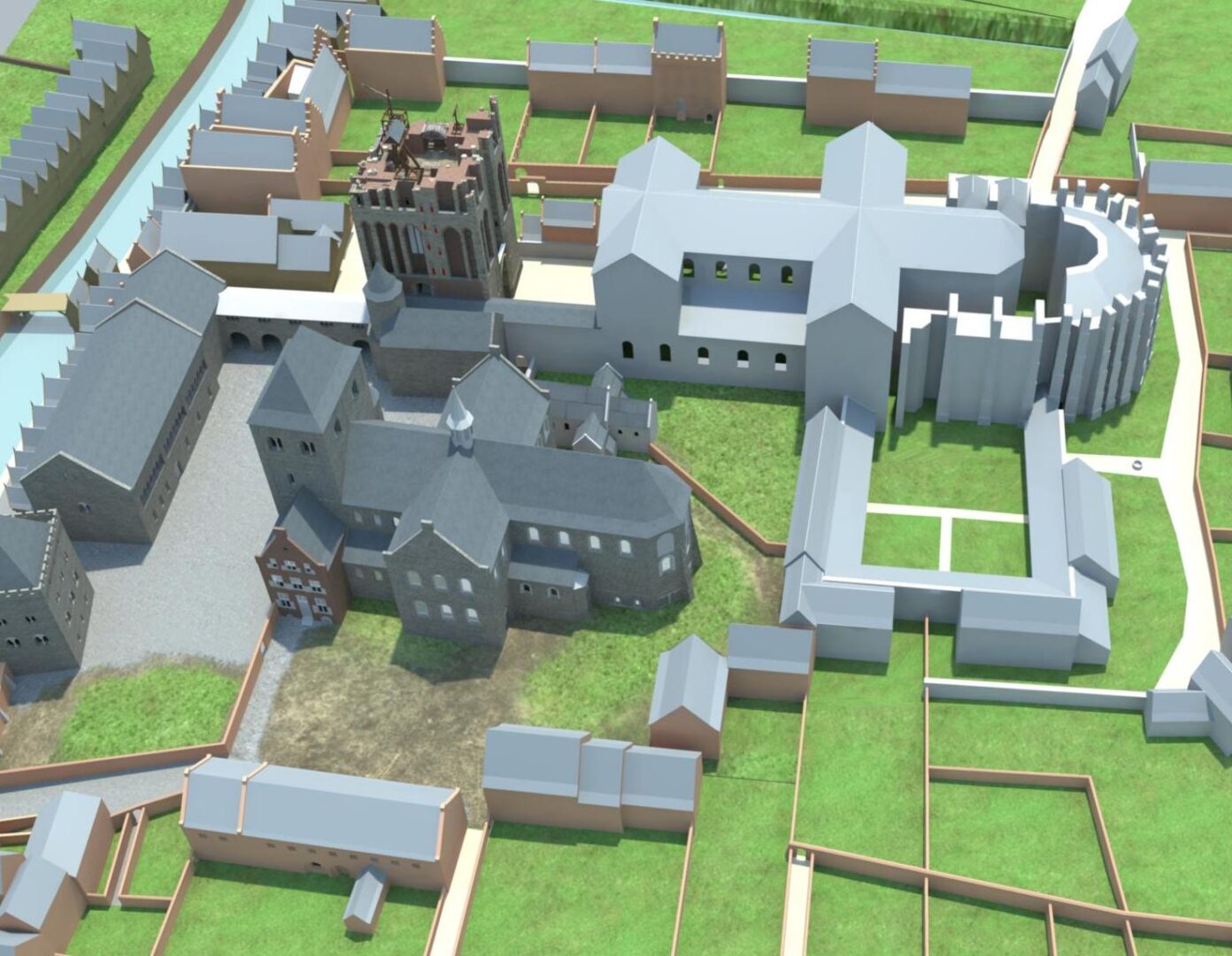
FIRE
During a great city fire that lasted nine days in 1253, Lofen Palace was likely destroyed. The palace was no longer used as such afterwards. The location became property of the chapter of the Dom Church.
Houses were built on the former site of the palace, which were inhabited by canons of te church. Since that time, the former basement of the palace has been used as cellars.
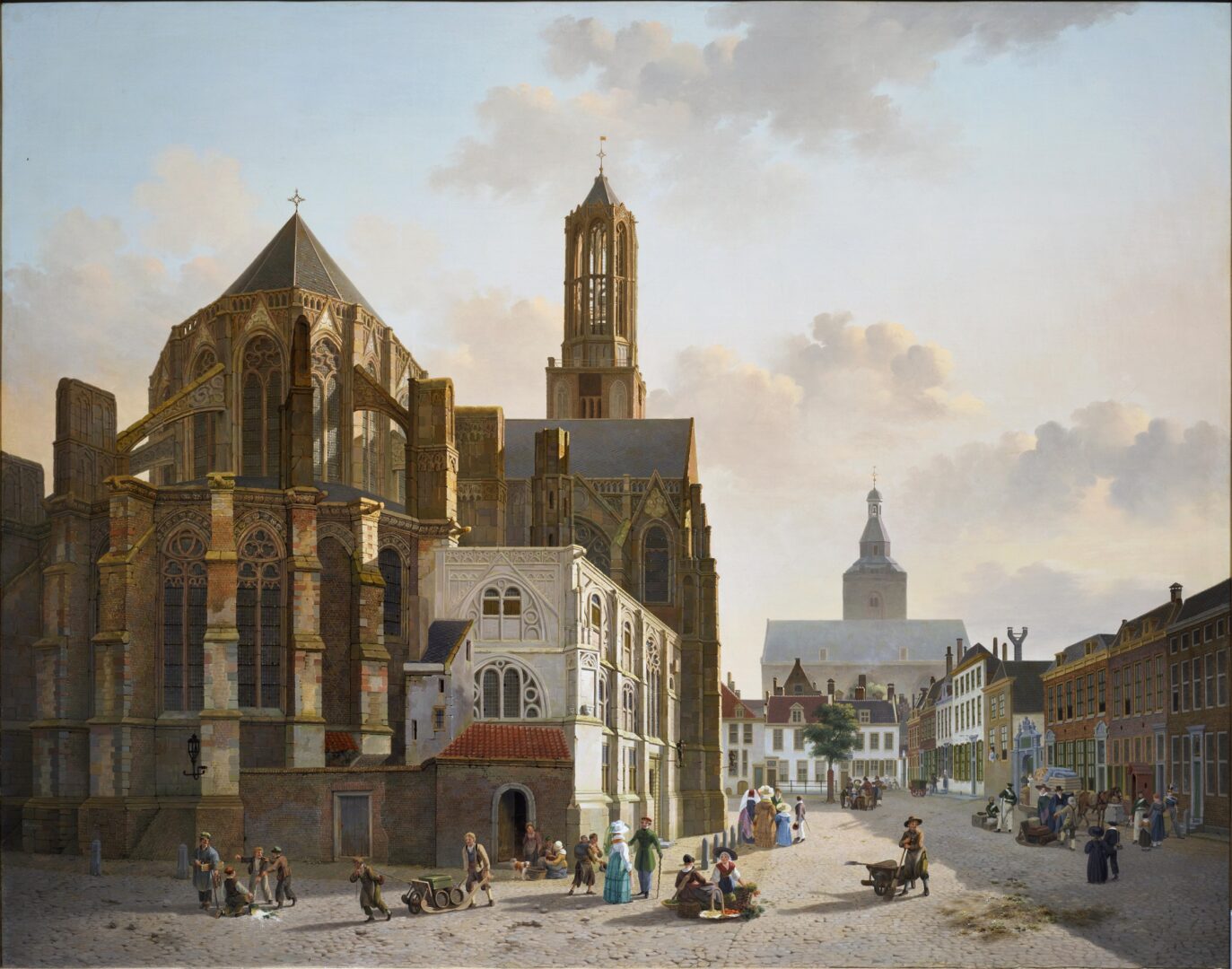
OBLIVION
For centuries, the remains of Lofen Palace were hidden and fell into oblivion. In the nineteenth and twentieth centuries, the palace was ‘rediscovered.’
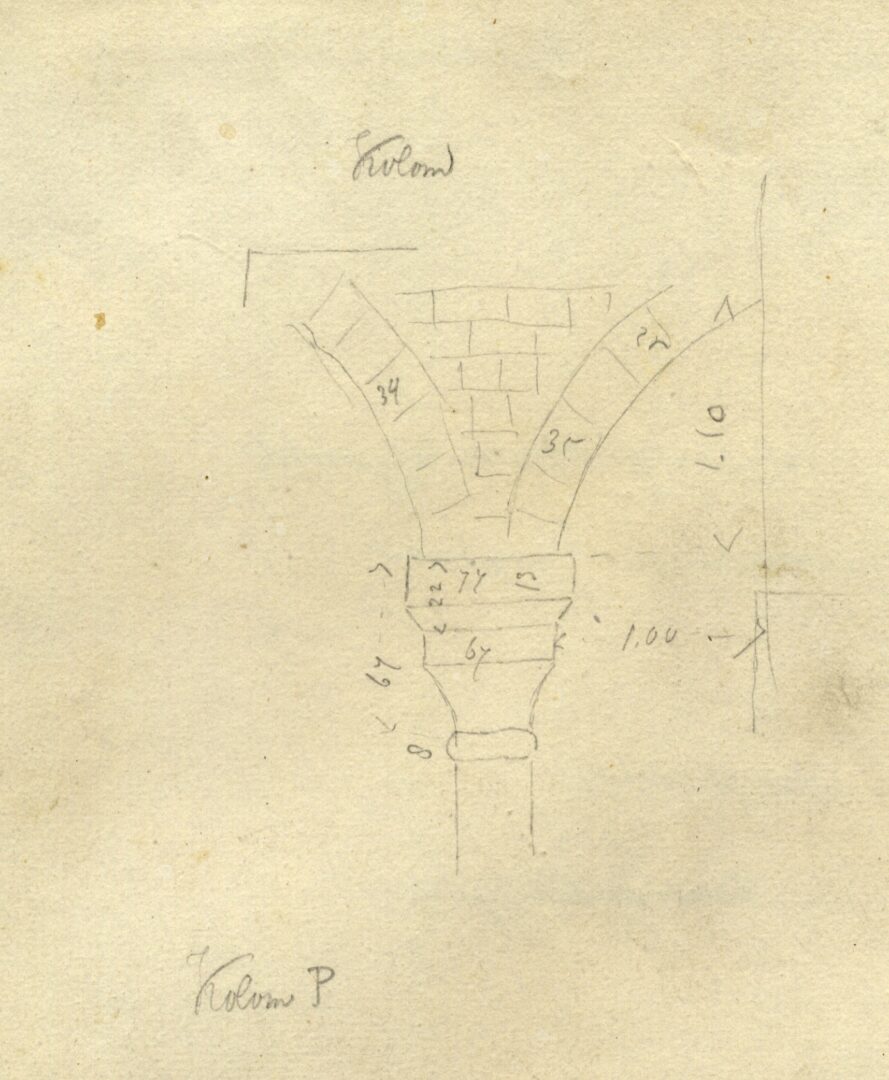
DISCOVERY
A former owner of one of the buildings on Domsquare named Gustav Bauer had discovered an old column in a basement. His ‘love for archaeology’ drove him to start researching the age of this column. Bauer came to the conclusion that this column came from the ninth or tenth century. “But remains from the time of the Hohenstaufen, yes even from the time of the Saxon emperors”.
It concerned the building on Domplein 16 (now Café Walden), where Bauer had established the Utrechtsche Fabriek van Zilverwerk in 1856 together with S. and J. van Lier.
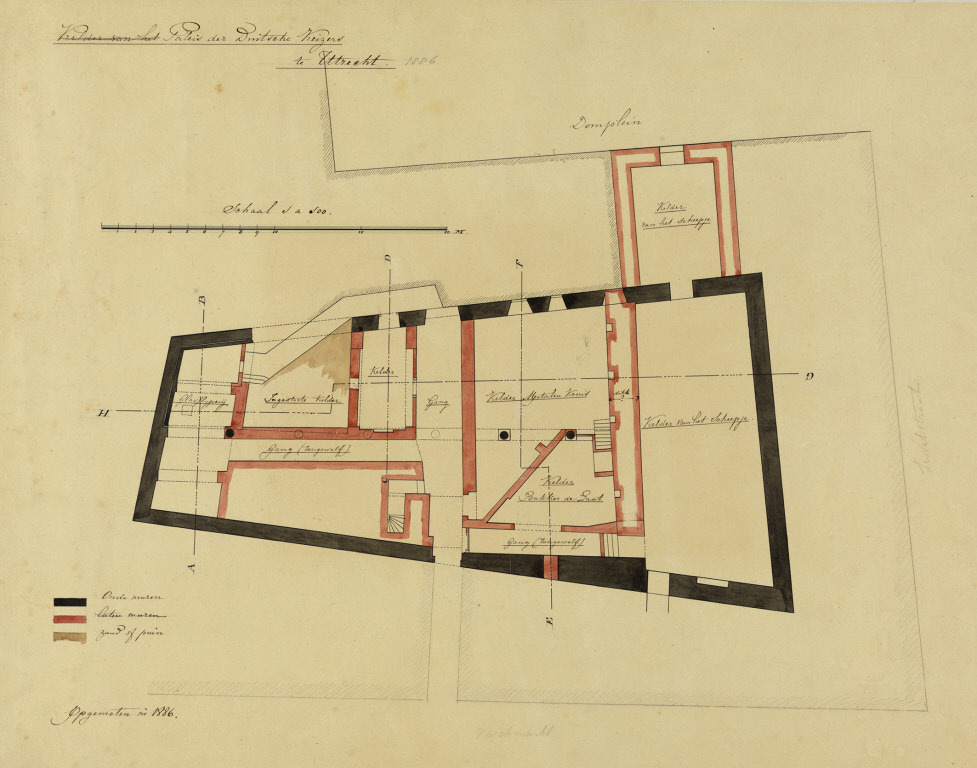
MEASUREMENT
In 1886 there was renewed interest in the cellars between the Vismarkt and the Domsquare. This time it came from The Hague, at the request of state and municipal archivist Samuel Muller Fzn. Draftsman Adolph Mulder came to Utrecht to report and make precise measurements.
Parts of the wall were also excavated in some places. The inscription on the map shows that these remains were regarded as the ‘Palace of the German Emperors in Utrecht’. This is confirmed by an article from the same year in the “Bouwkundig Weekblad” by Ferdinand Jacob Nieuwenhuis (1848-1919), later director of the Municipal Works Department in Utrecht. “In all cases, we are still dealing with the remains of one of the oldest buildings in the country.”
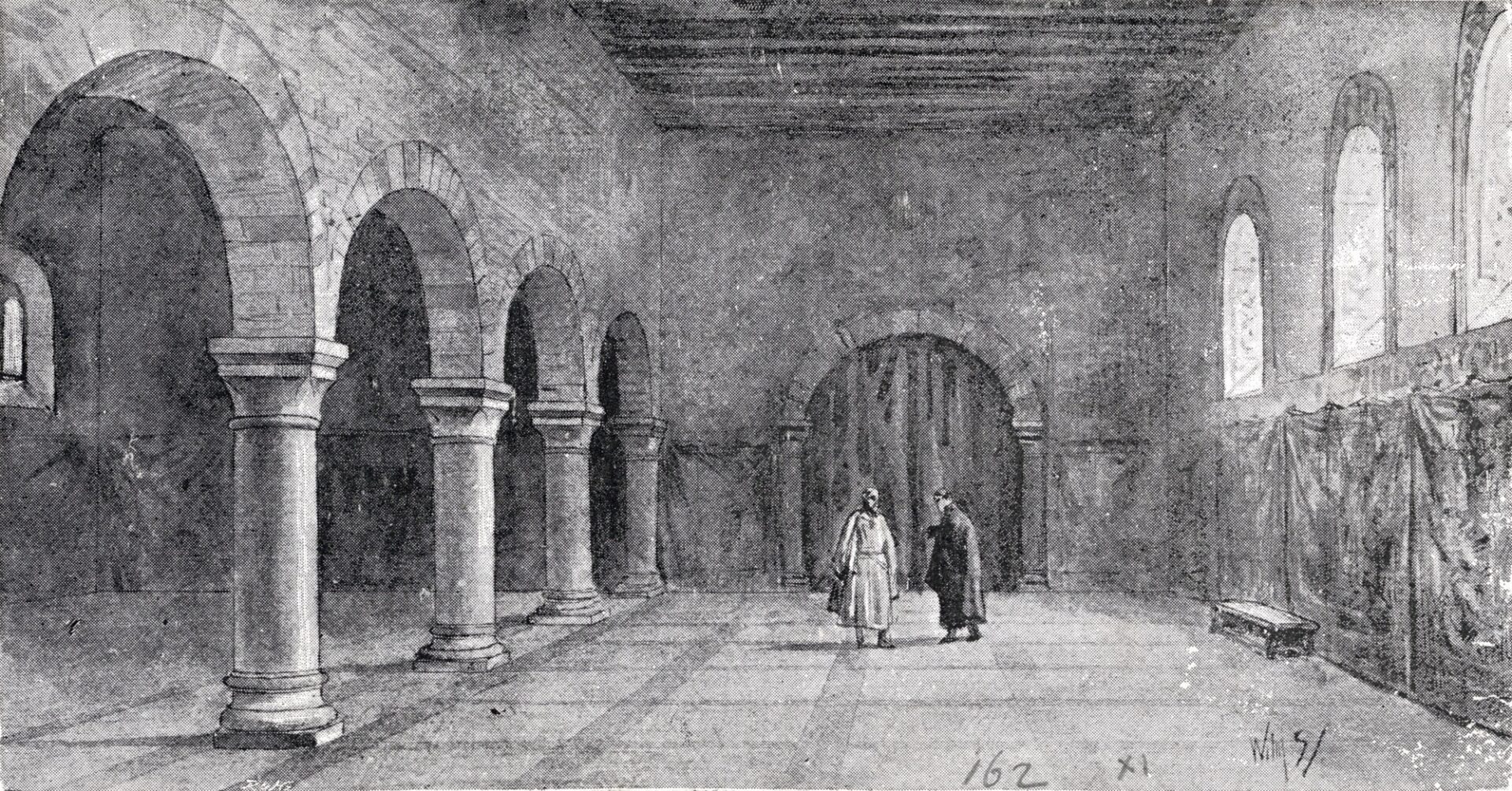
IMPRESSION
In 1893, Willem Steelink made a reconstruction of the interior of the palace. This reconstruction was based on the measurement by Adolph Mulder from 1886. As an illustration in the first part of ‘The life of our ancestors, a national history’ by Nicolaas de Roever and Jacob Dozy, it would find its way to a wide readership and continued to determine the image of Lofen Palace.
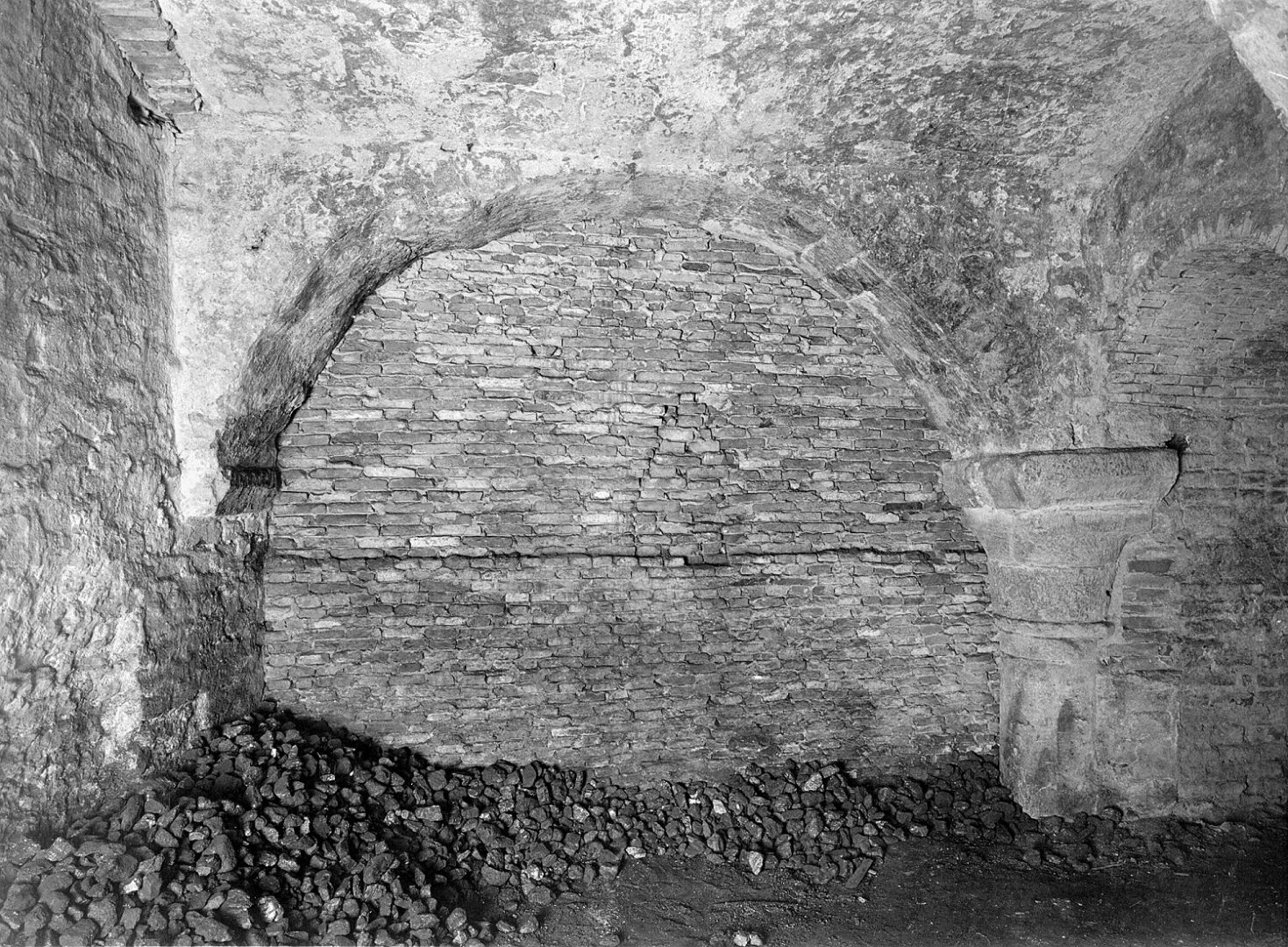
MONUMENT?
In 1928, the municipality of Utrecht received its own Monuments Ordinance and in that context a Monuments Committee was established on May 9. This committee was given the task of drawing up an initial list of municipal monuments. When the list was drawn up by the Municipal Executive, the committee’s recommendation of the remains of the Lofen Palace in these cellars was not yet accepted. After all, wasn’t it strange to ‘place monuments that are not visible and that people do not even really know of on the list’?
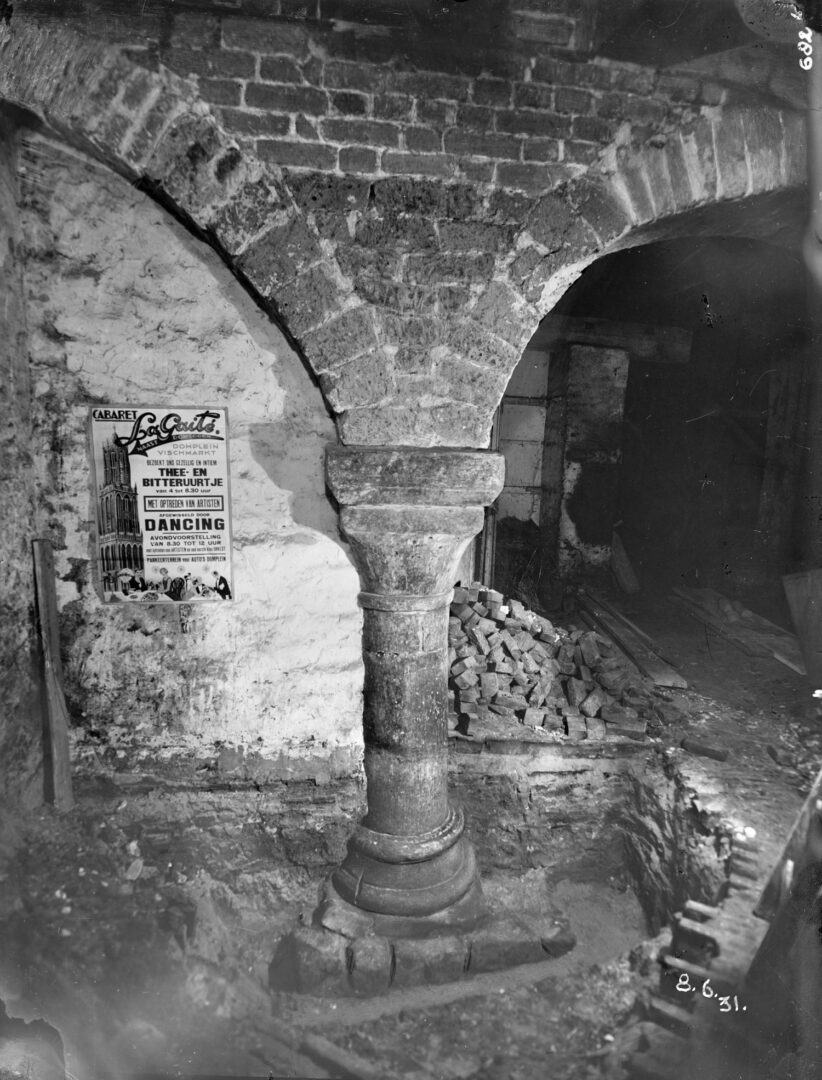
RESEARCH
This prompted the committee to conduct a further on-site investigation, which would ultimately take four years. After the National Office for Monument Carefirst made four photographic recordings on site, an order was given to have the entire complex re-measured and to excavate one of the columns down to the basement. To do this, Willem Stooker, supervisor of the Municipal Works Department, was asked. It was said he would have the ‘required piety’.
In June 1931, the committee took note of the first results of their research, which also included a visit to the basement of Domplein 16 to view the excavated column. The Municipal Executive then decided to add Domplein 13, 14, 15, 16, 18 and 19 to the Utrecht moments list, at least ‘as far as these plots contain remains of the old Lofen Imperial Palace or one of the so-called stone houses of the Dom’. The latter related to the claustral houses that the Cathedral Chapter had built on the site of the former palace after the mid-thirteenth century, of which the walls were still hidden behind the facades of the buildings mentioned.
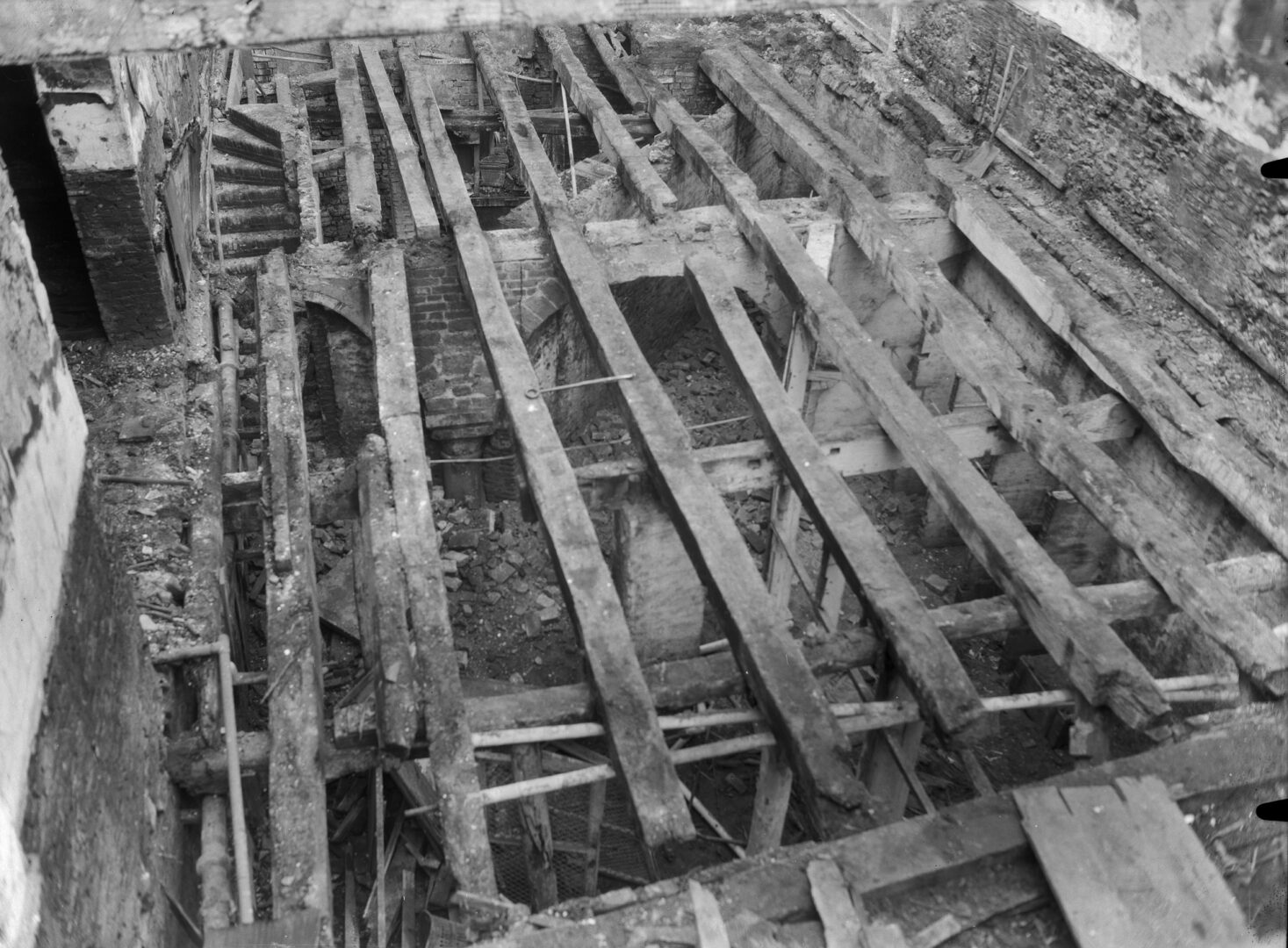
FIRE AGAIN
On the night of November 21, 1934, a raging fire completely destroyed the building at Domplein 16. From the Cathedral Square, you could look down through the half-burned ceiling beams and see the remains of Lofen Palace. On March 20, 1935, the Monuments Committee also considered the new plans for the complex. Art historian George Charles Labouchere advised that the remains of Lofen Palace be ‘reduced to the old floor level and preserved as a monument’. He received permission for this.
However, he was unable to save the last claustral house that stood above the remains of Lofen Palace, even when the building was offered for sale to the city. The Municipal Executive found the costs far too high.
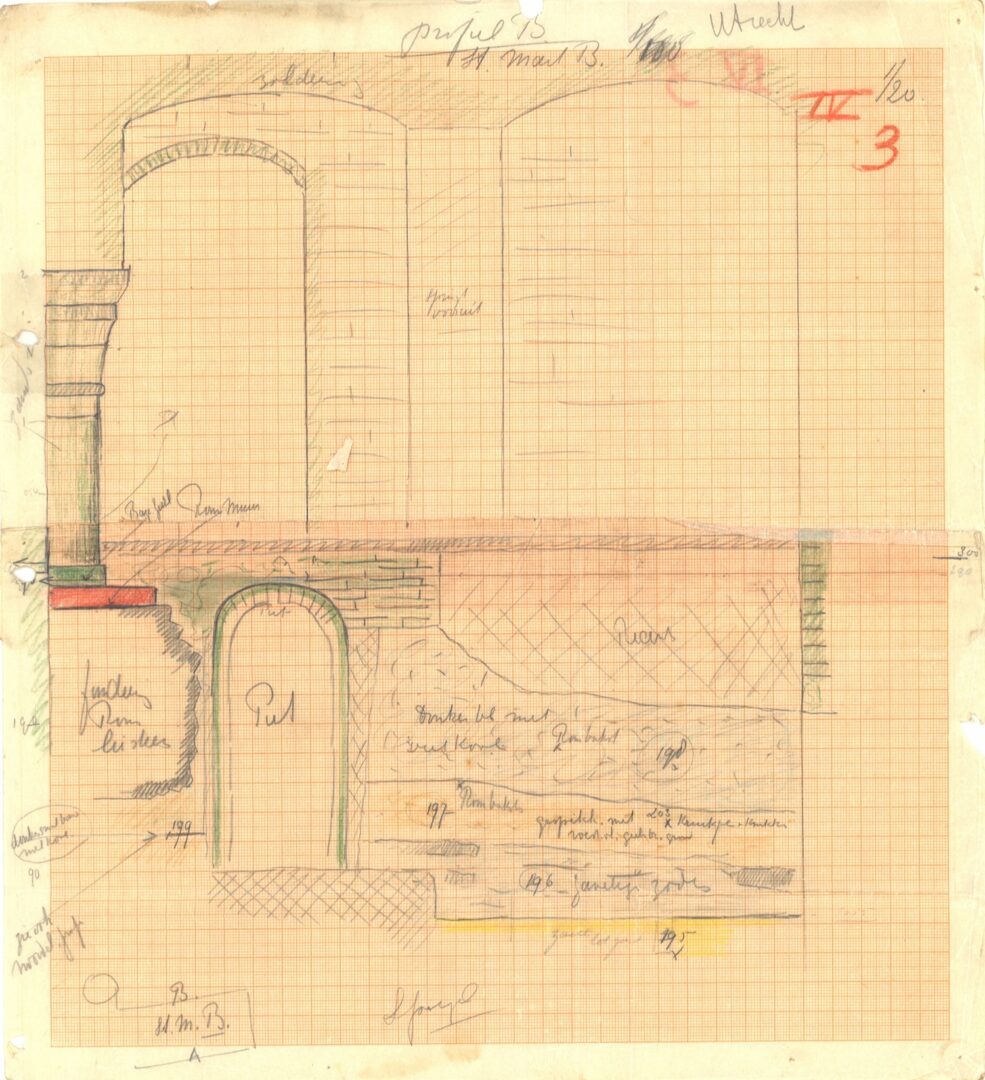
EXCAVATIONS
Labouchere, Stooker and archaeologist A.E. Van Giffen were not only involved in the cellars, but also in the excavations of the Domsquare in 1936. The research concerning the exact size of the Roman fort Traiectum, made them also dig in other cellars. For example, they also found a section of Roman wall under the northernmost column of Lofen Palace.
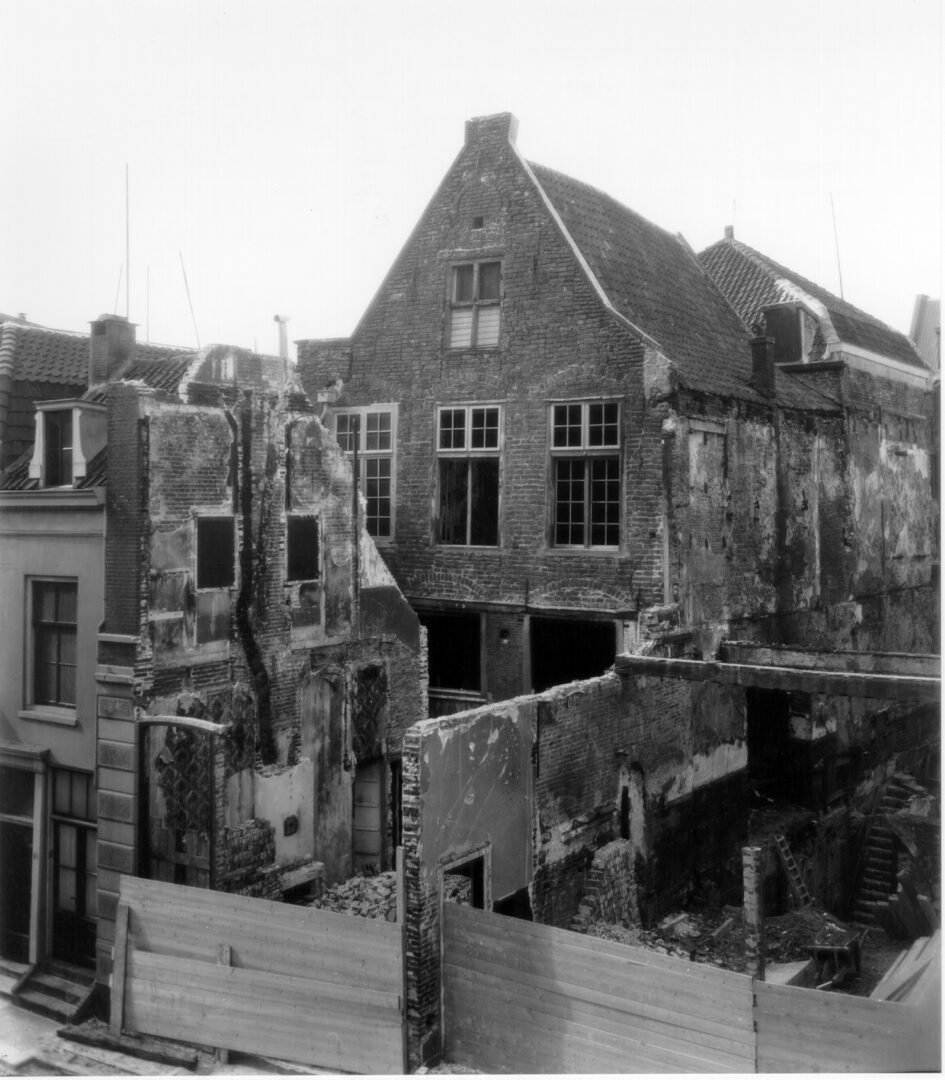
LAST HOME
On April 2, 1937, the complex with the last medieval house was put up for auction and sold for 27,000 guilders – which is more than ten times the amount for which the ‘stone house’ had been offered to the municipality two years earlier. In 1938, this complex was demolished to make room for a garage with upstairs apartments (now Domplein 17 and 18).

GARAGE
Garage Vredendaal was established in the new buildings at Domplein 16 and 17 for more than fifty years. Next to being a gas pump, the garage focused on selling Skodas after the war.

CATERING & LIVING
Since the early 1990s, the buildings with cellars containing remains of Lofen Palace have been used for catering and residential purposes (Maartenshof).
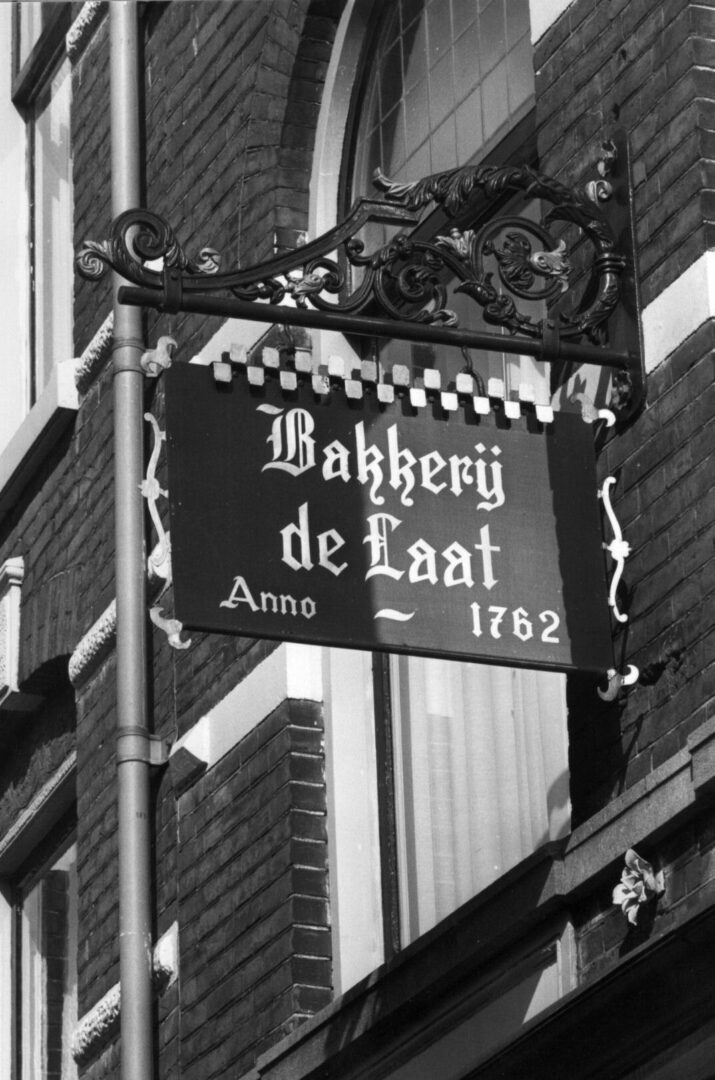
BAKERY ANDRÉE & DE LAAT
Until 2000, Bakery Andrée & De Laat was located at Vismarkt 21. The cellars, that are now accessible as the historic Lofen Palace attraction, were owned by the bakery until 2020 and were then transferred to ‘Stadsherstel Utrecht’.

900 YEARS UTRECHT
The traces of Lofen Palace have been hidden for centuries. Until now. DOMunder and the Paleis Lofen community have made the hidden cellars accessible and experienceable. Since the 900th anniversary of Utrecht, on June 2 2022, Lofen Palace is open to everyone.